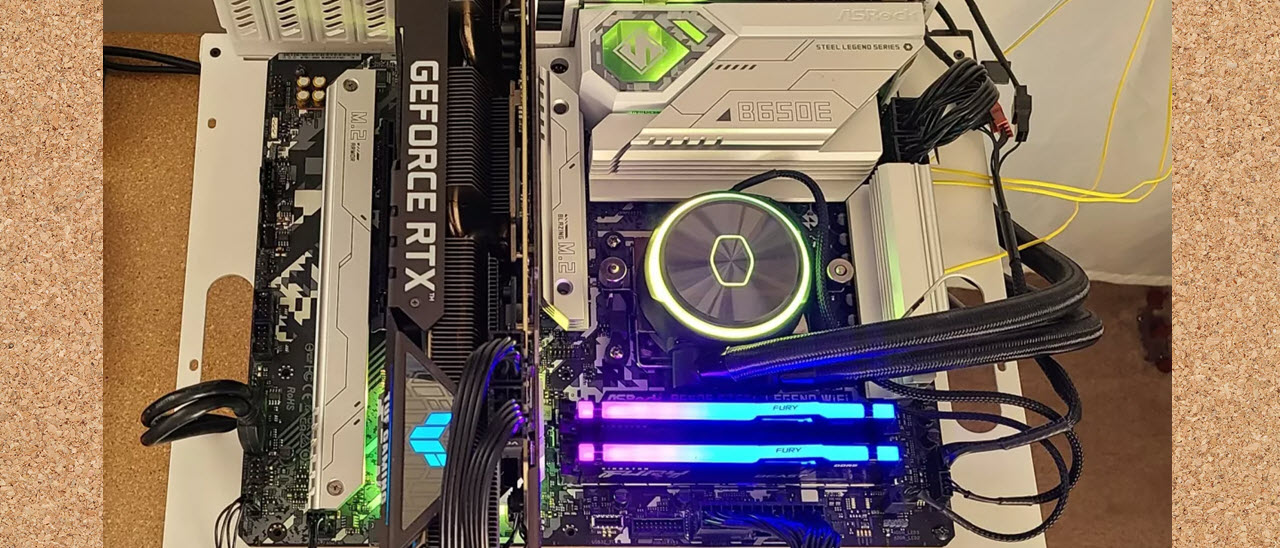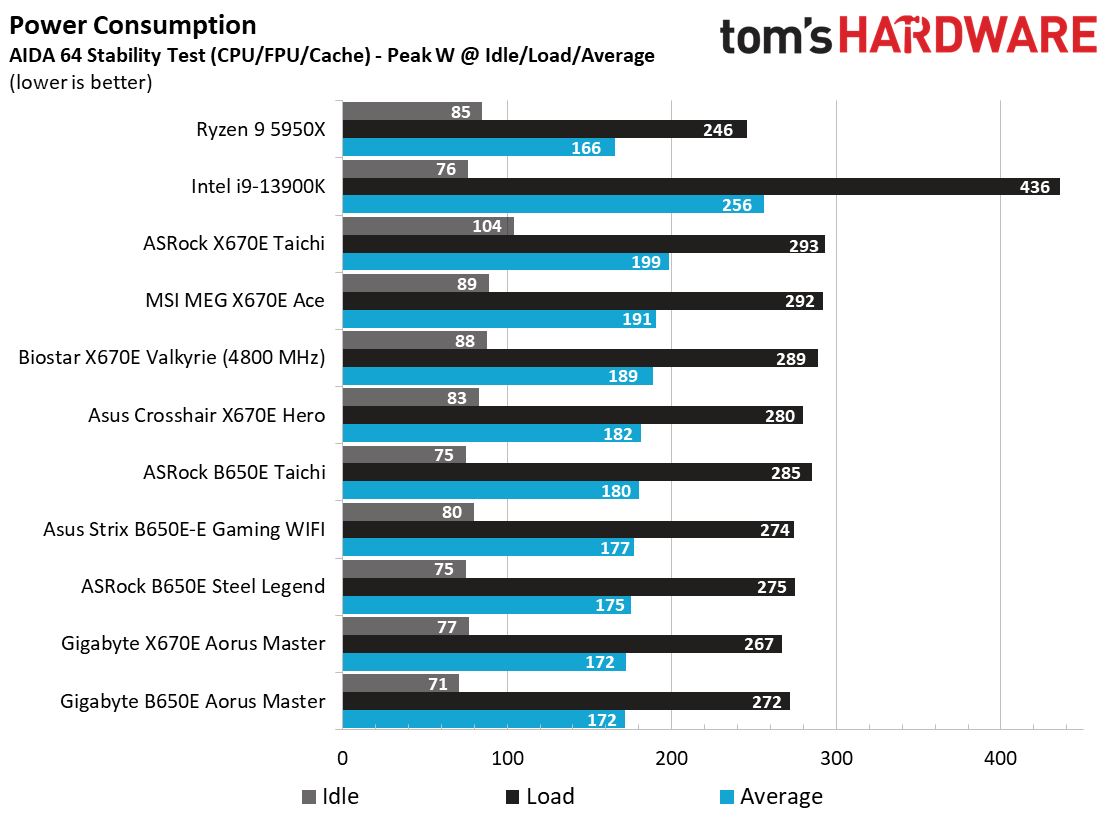Why you can trust Tom's Hardware
Benchmark Results
Our standard benchmarks and power tests are performed using the CPU’s stock frequencies (including any default boost/turbo), with all power-saving features enabled. We set optimized defaults in the BIOS and the memory by enabling the XMP profile. For this baseline testing, the Windows power scheme is set to Balanced (default), so the PC idles appropriately.
Synthetic Benchmarks
Synthetics provide a great way to determine how a board runs, as identical settings should produce similar performance results. Turbo boost wattage and advanced memory timings are places where motherboard makers can still optimize for either stability or performance, though, and those settings can impact some testing.
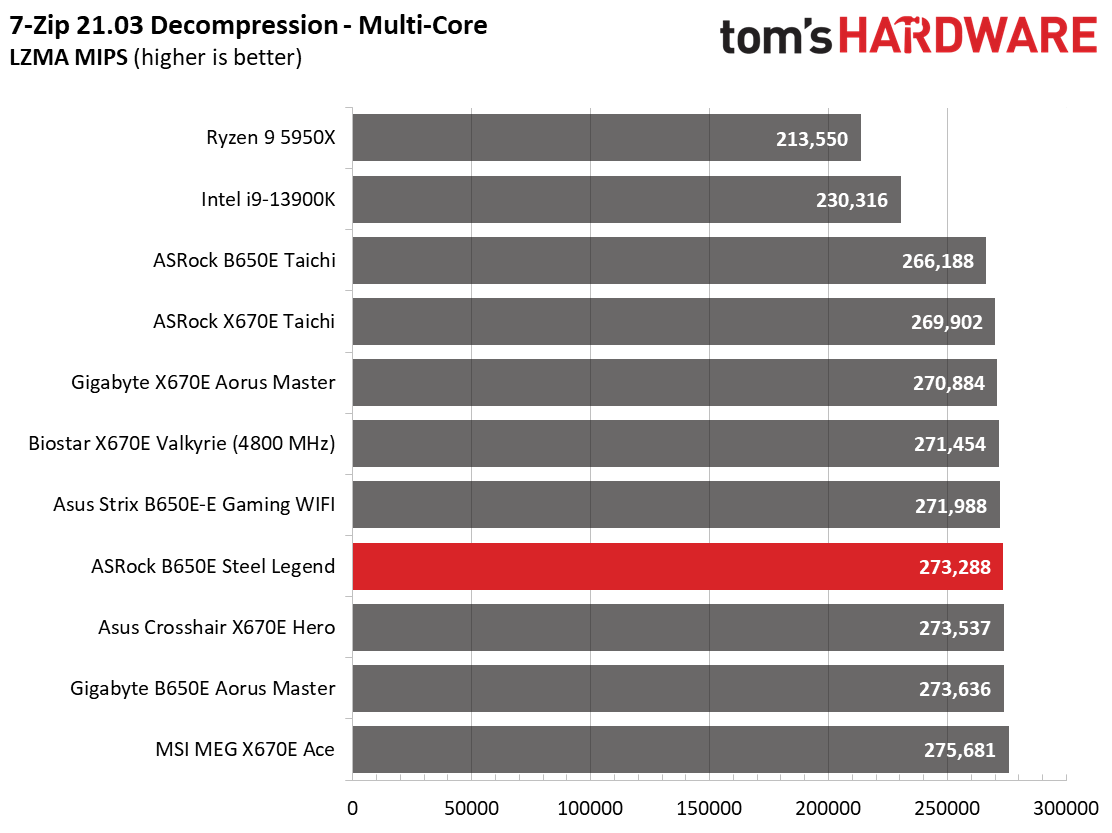
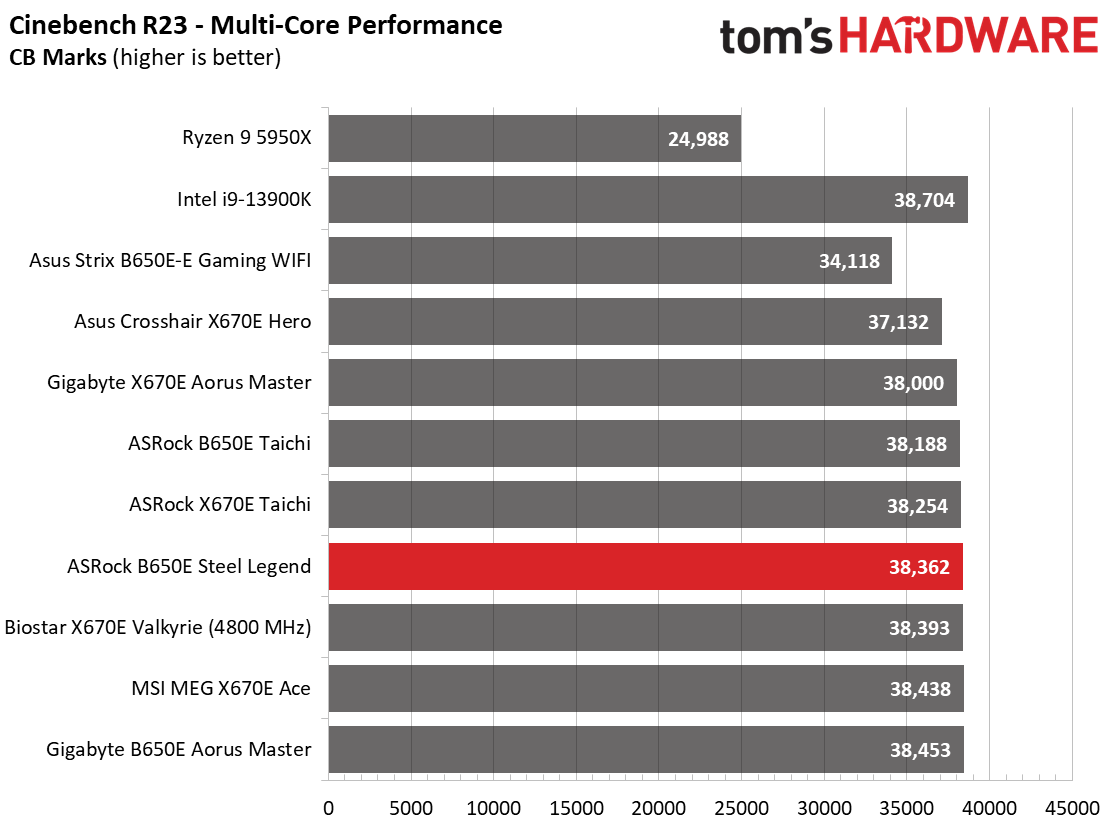
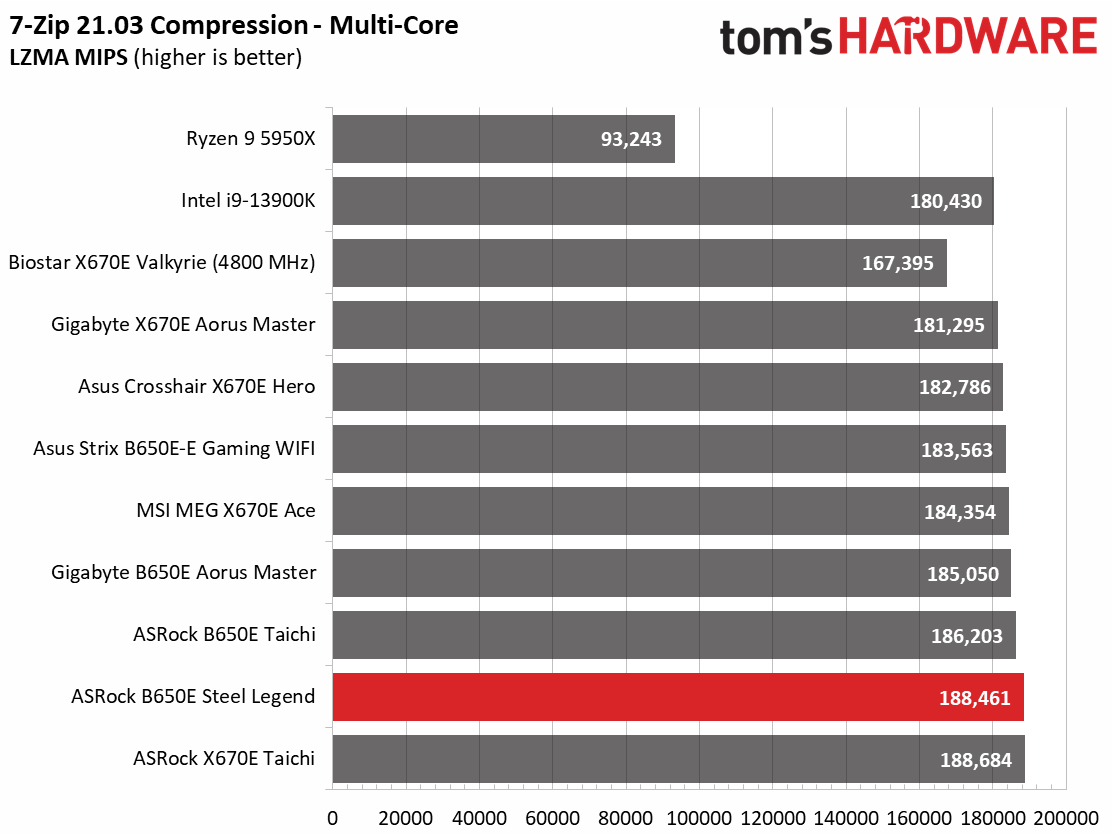
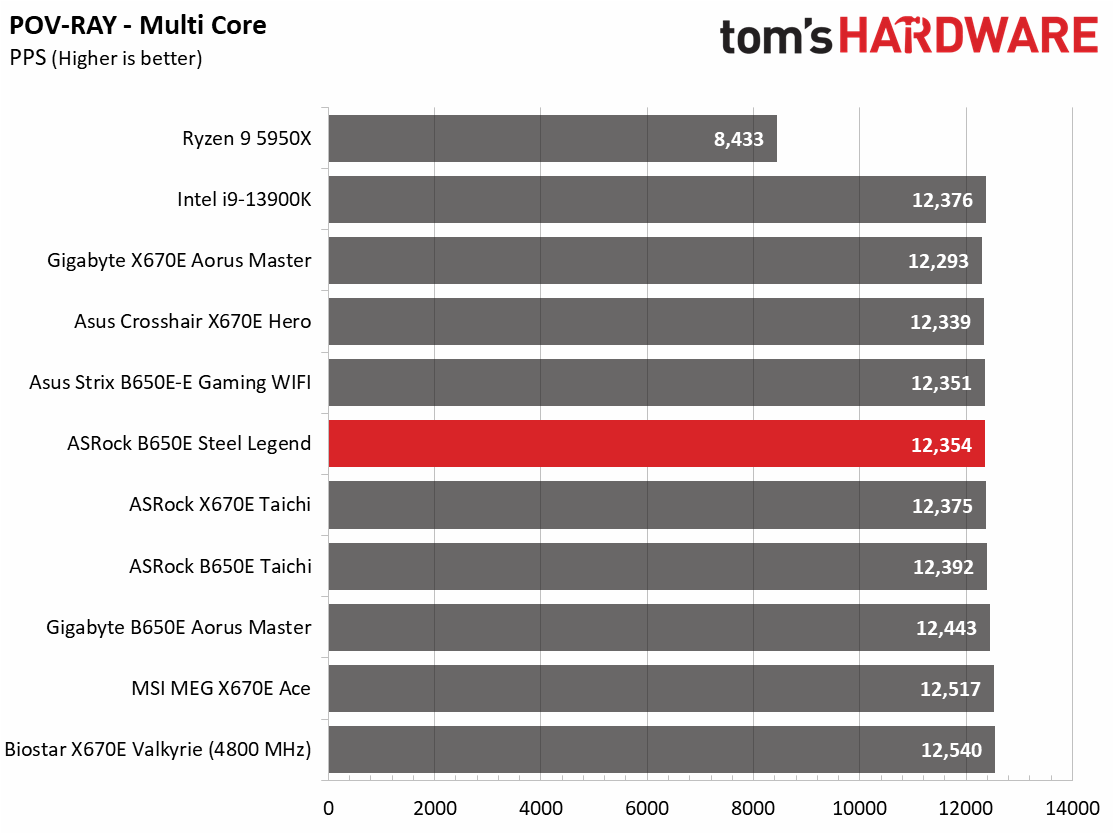
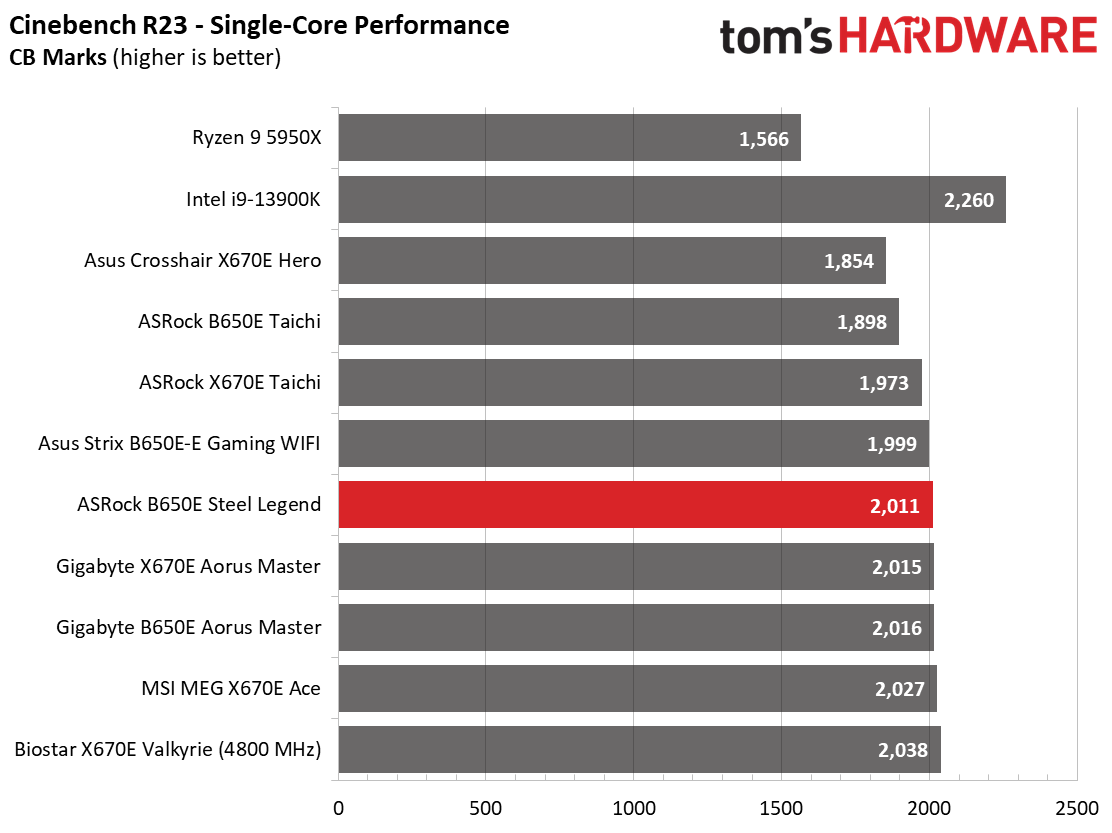
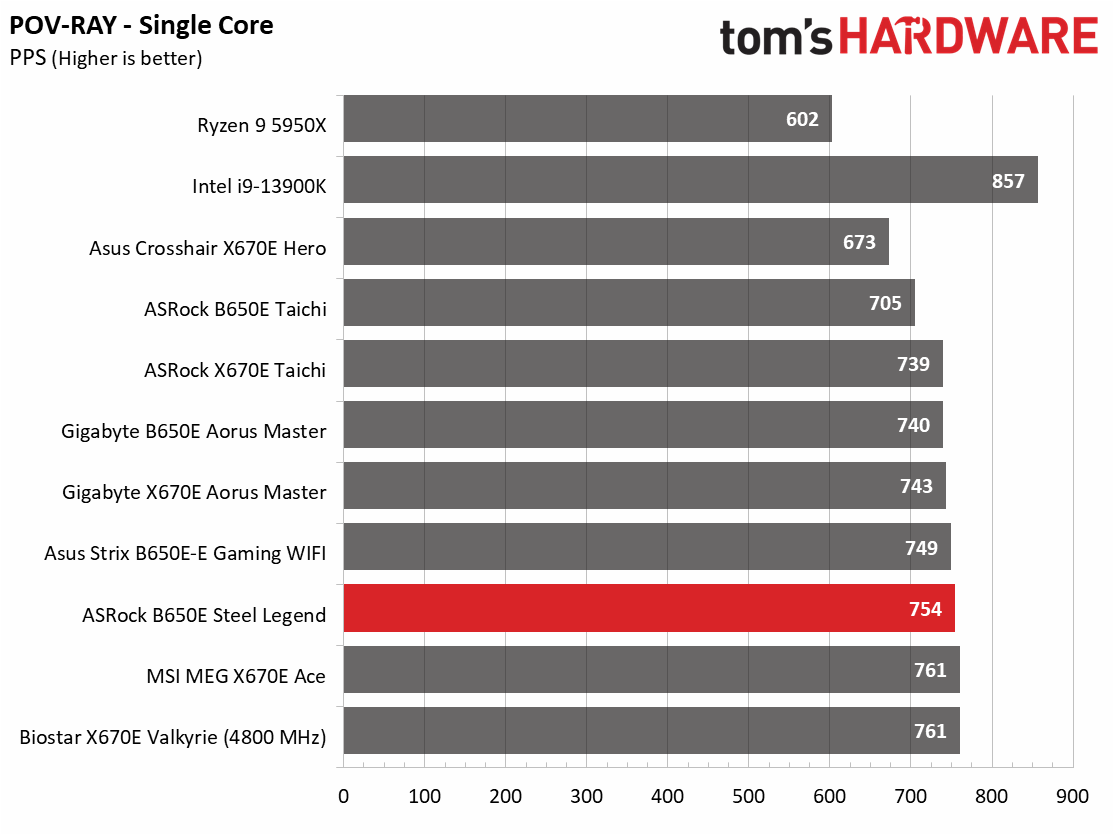
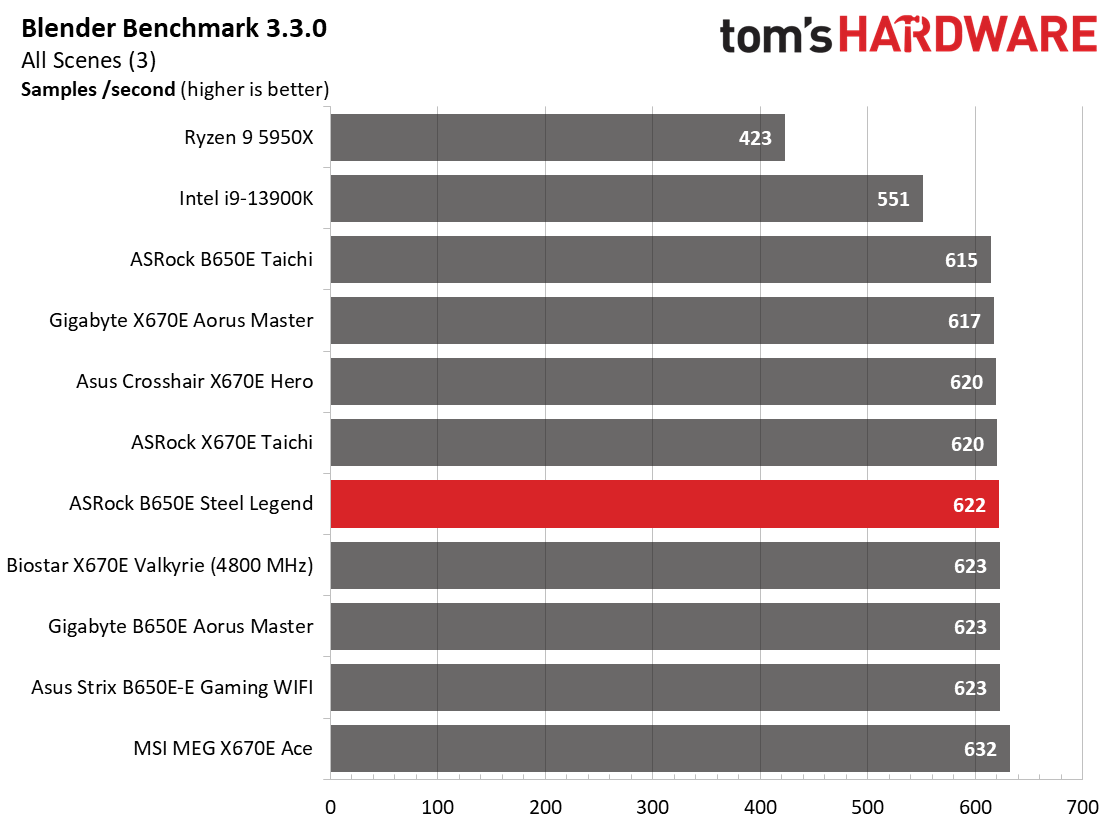

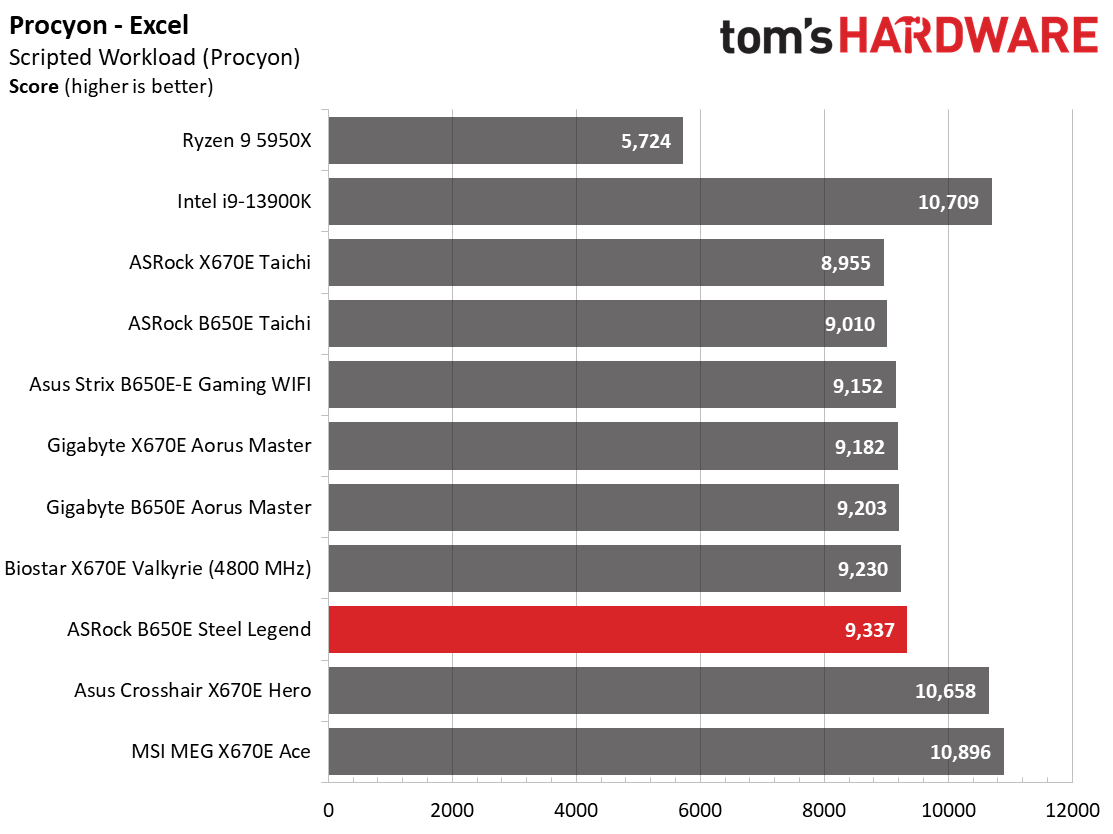
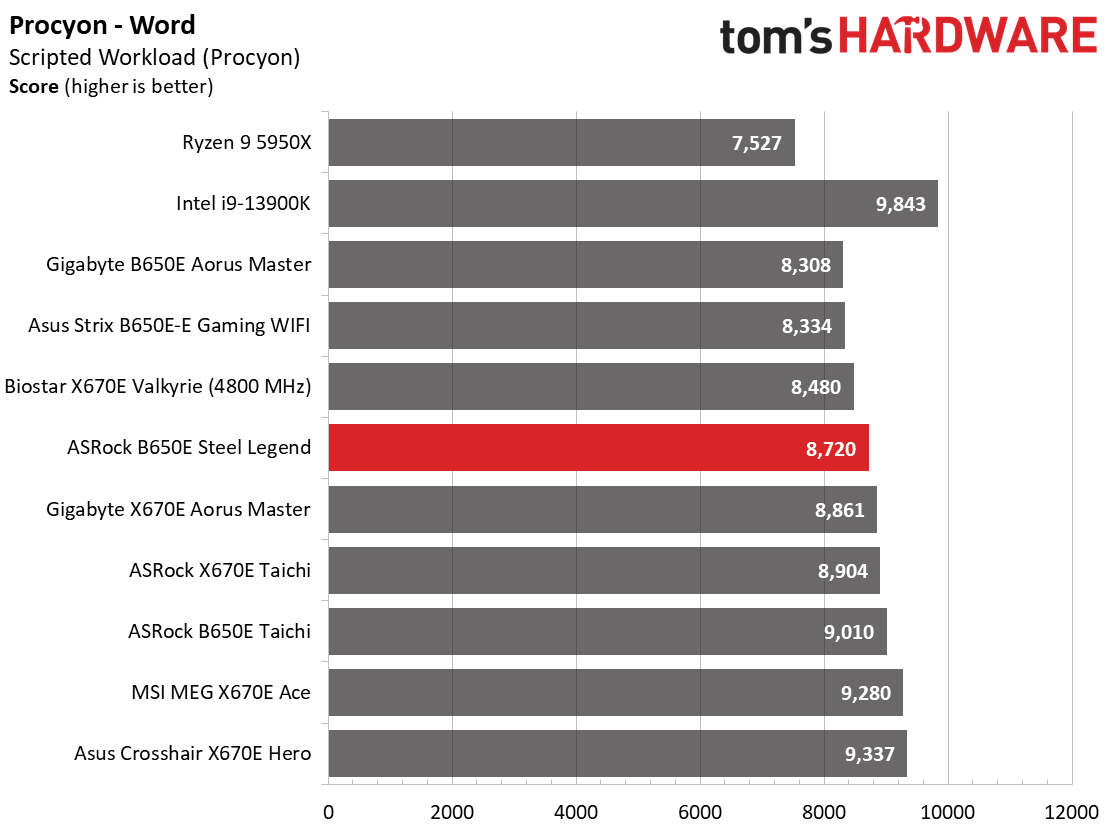
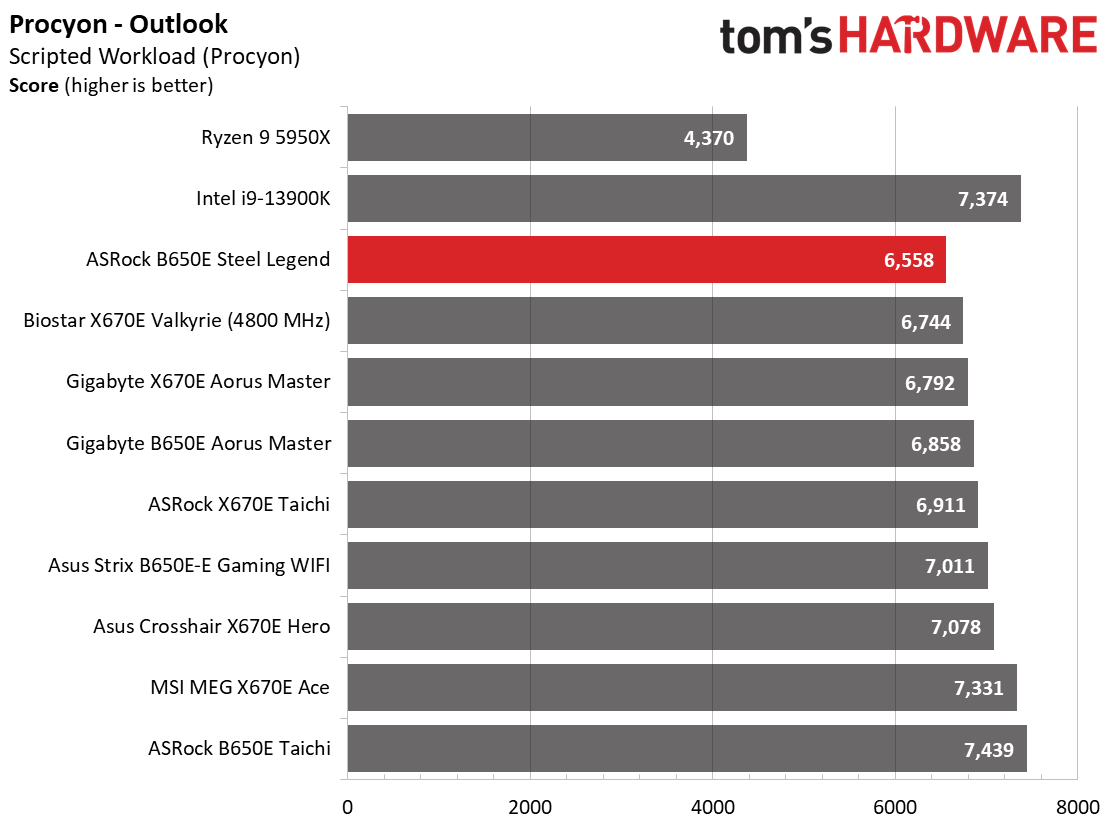

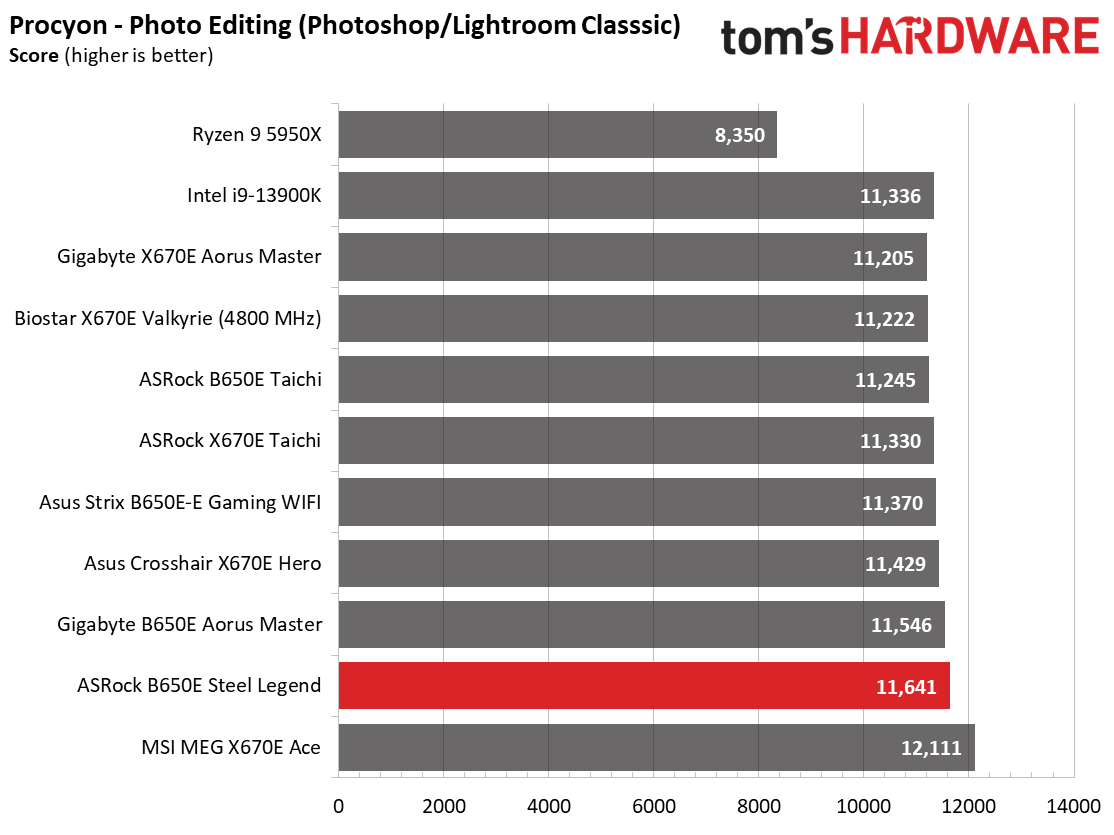
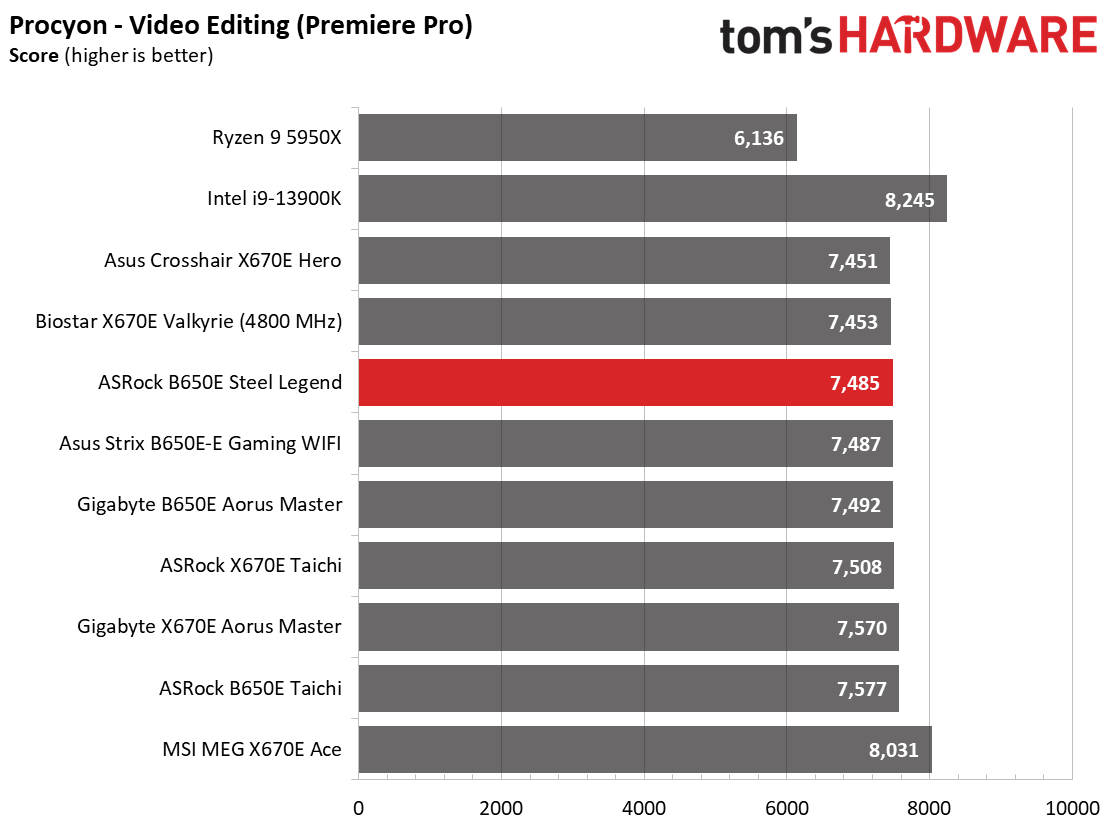
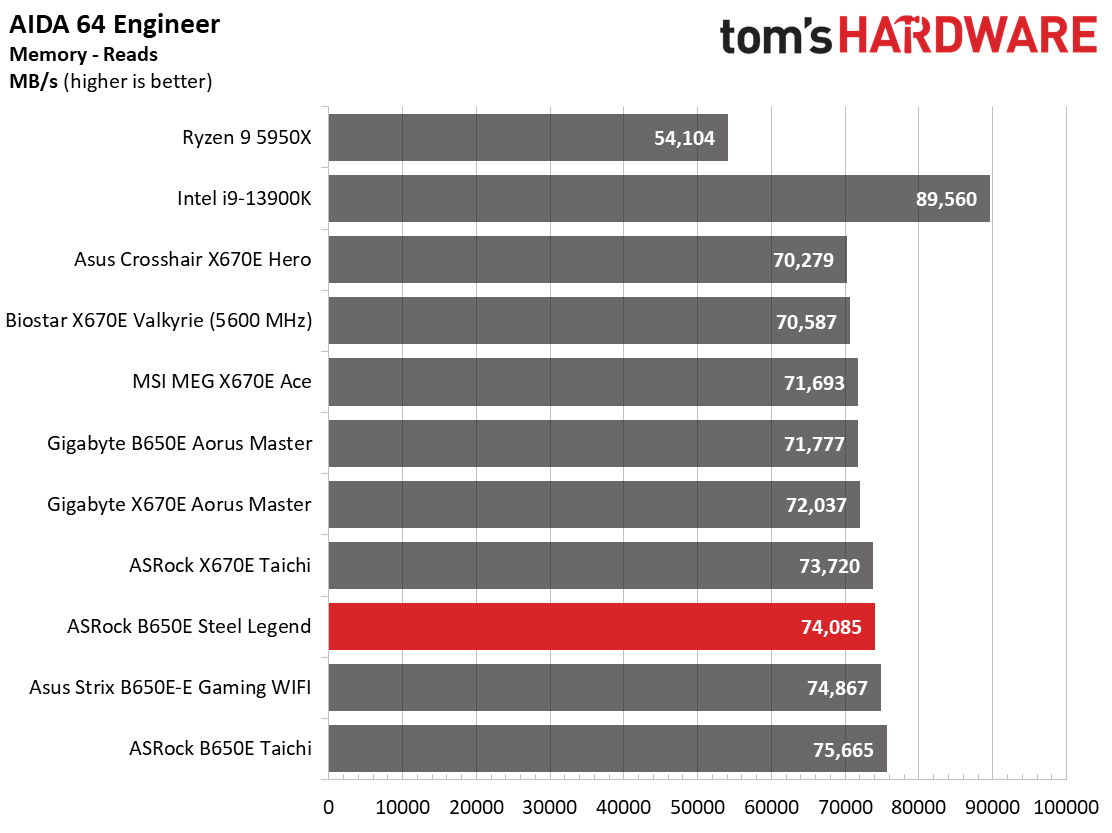
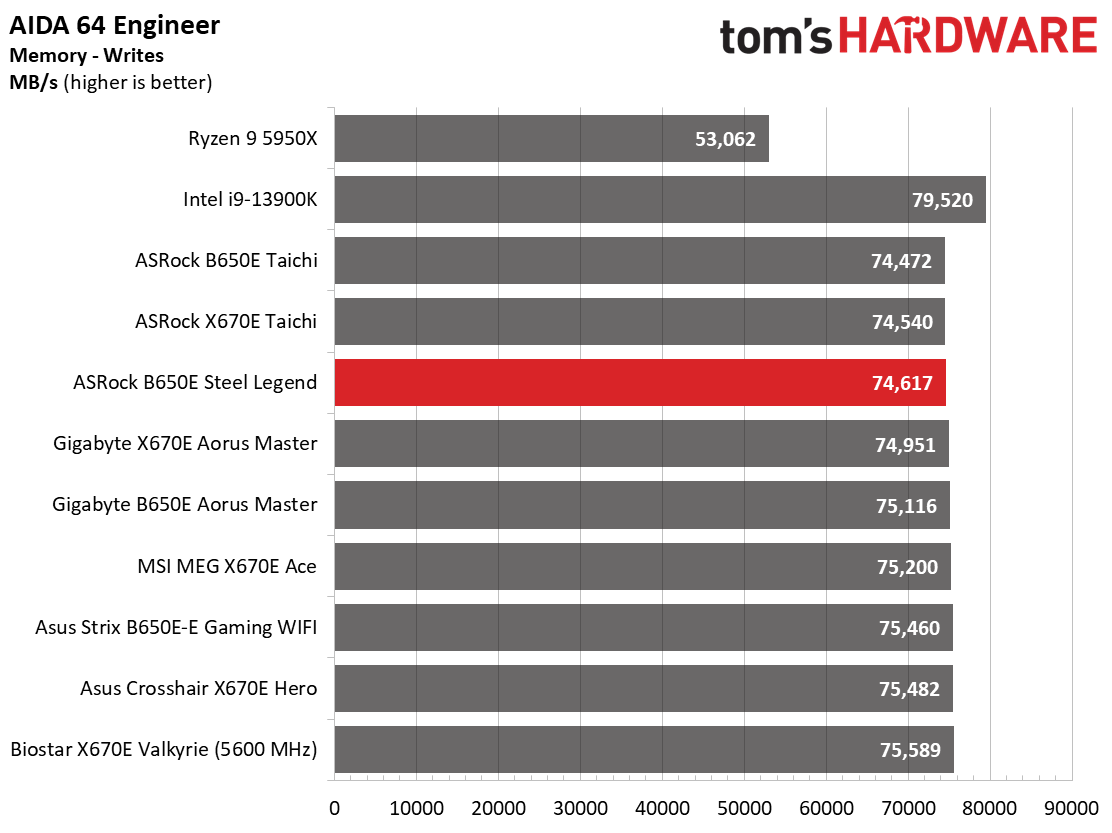


For our synthetic testing, the B650E Steel Legend performed well overall, achieving average to above-average results in most tests. Surprisingly, it struggled a bit in the Procyon Office tests, which were average to just below average. That said, there’s nothing to be concerned about in this set of test results.
Timed Applications
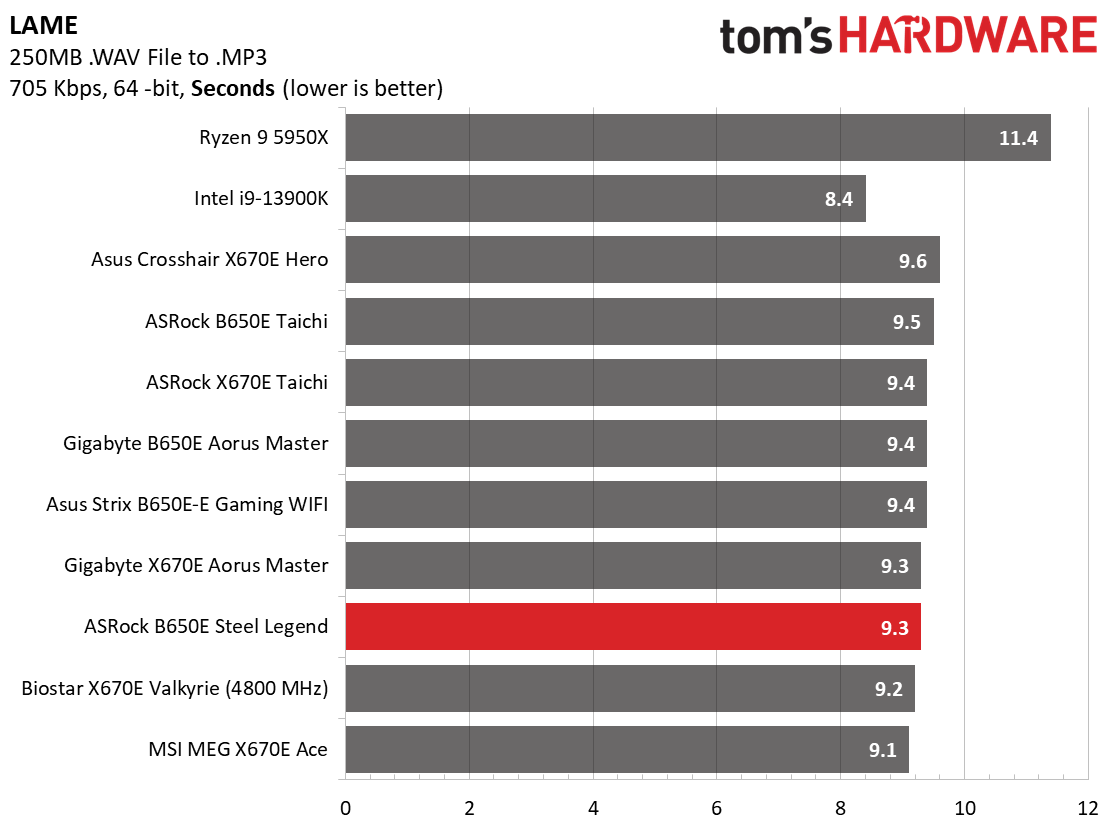
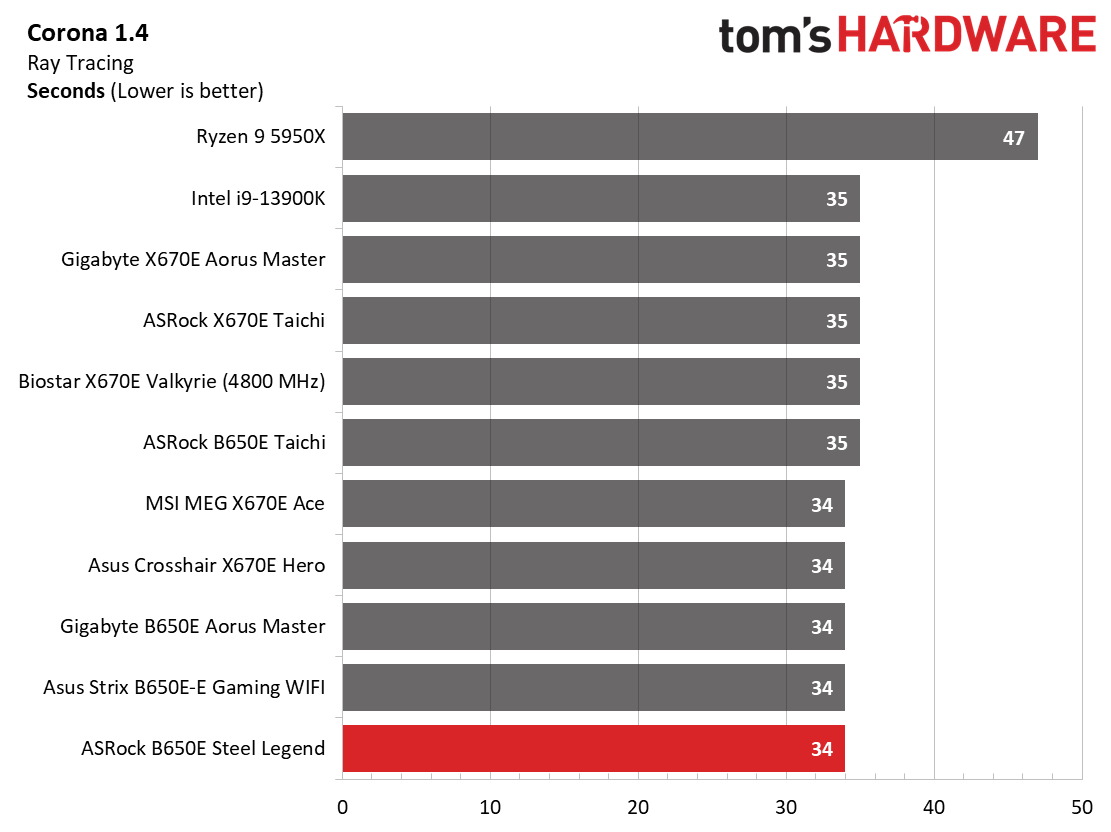

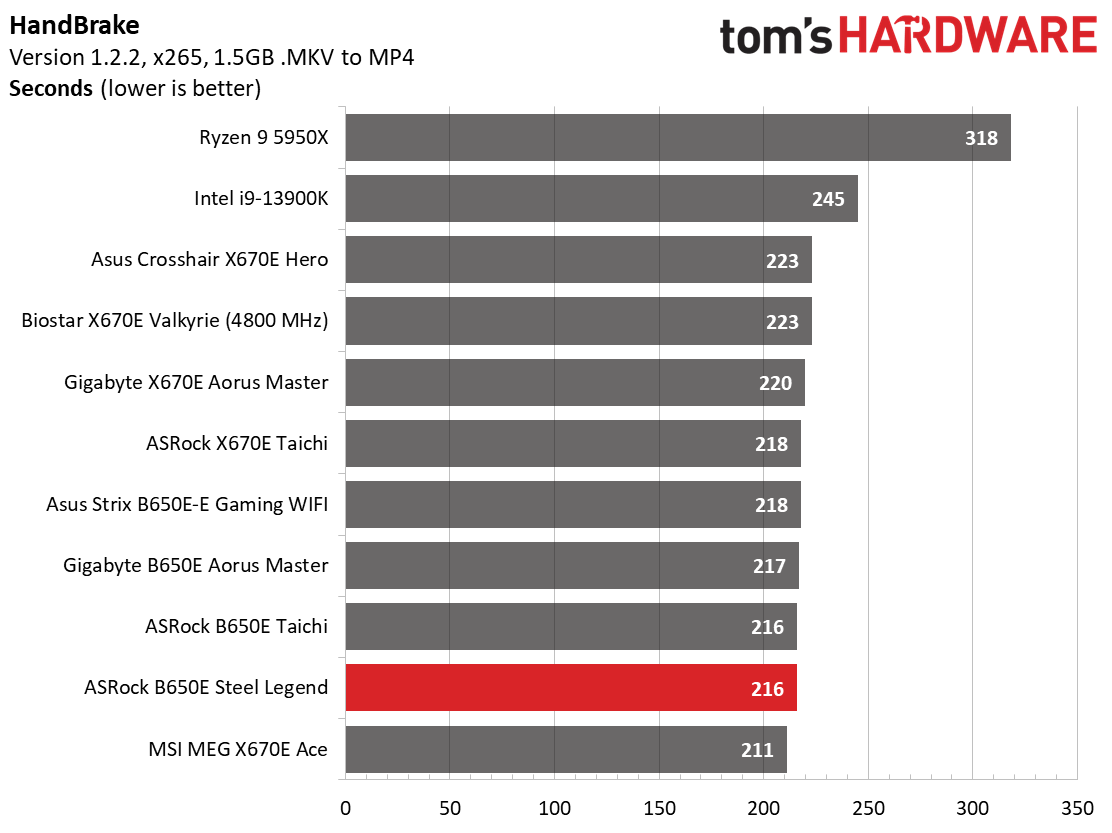
Overall, the ASRock board had a good showing on the timed tests. LAME and Corona times we average or faster than average, as were both Handbrake results. There’s nothing to worry about here, either!
3D Games and 3DMark
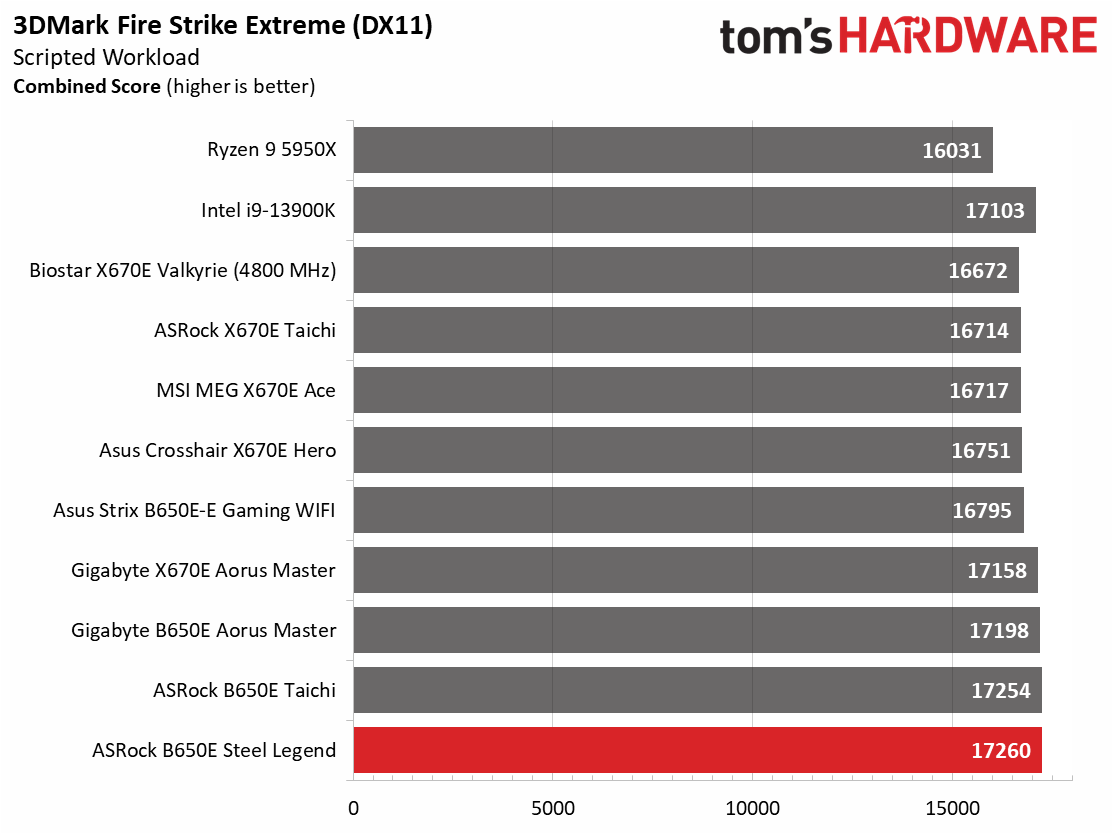

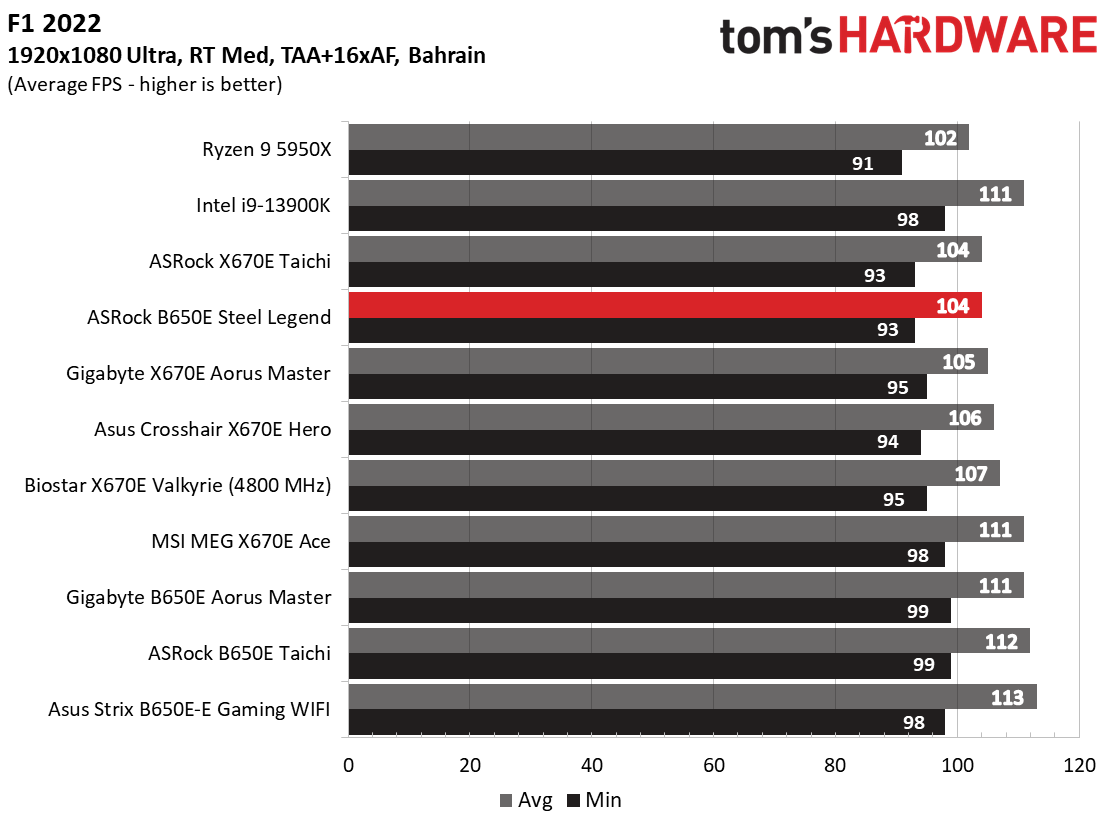
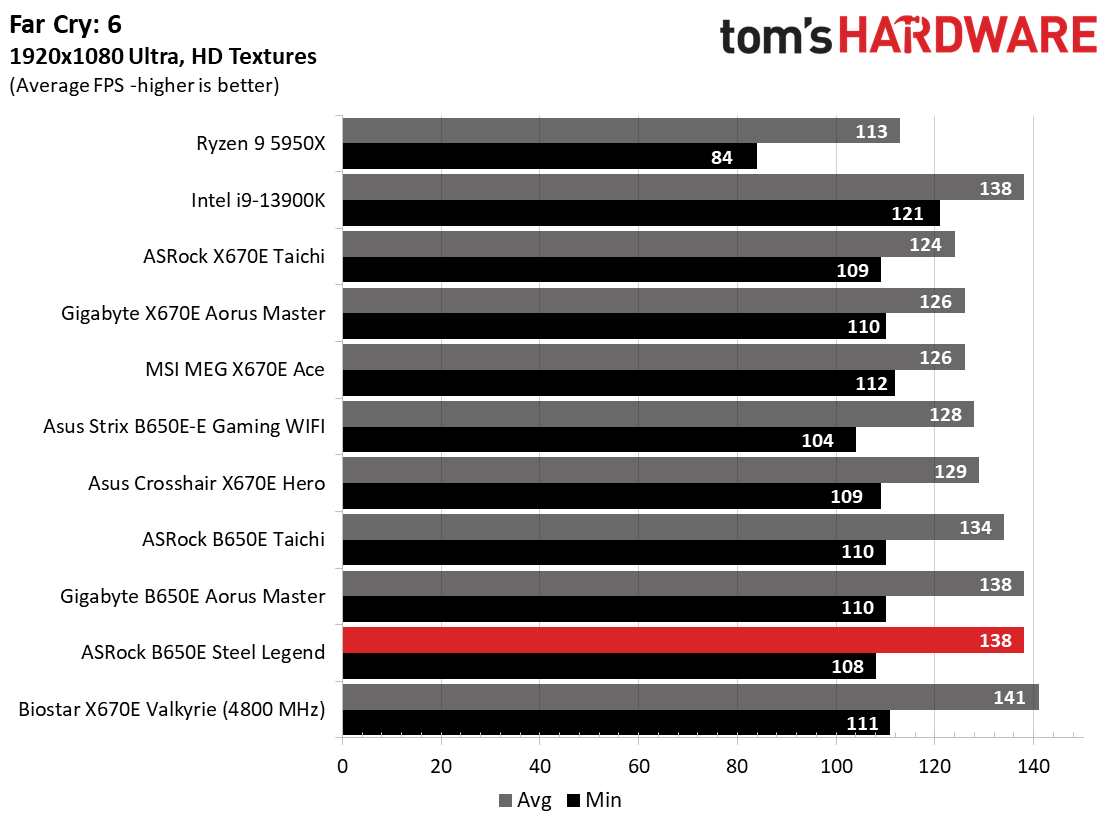
Starting with the launch of Zen 4, we’ve updated one of our games, F1 21 to F1 22, while keeping Far Cry 6. We run the games at 1920x1080 resolution using the Ultra preset (details listed above). As the resolution goes up, the CPU tends to have less impact. The goal with these settings is to determine if there are differences in performance at the most commonly used (and CPU/system bound) resolution with settings most people use or strive for (Ultra). We expect the difference between boards in these tests to be minor, with most falling within the margin of error differences. We’ve also added a minimum FPS value, which can affect your gameplay and immersion experience.
The B650E Steel Legend is a competent gamer. It scored well in the 3DMark benchmarks and also in the game tests, though the F1 result was on the slower side of average.
Overclocking
Over the last few CPU generations, overclocking headroom has been shrinking (at least on the AMD side) while the out-of-box potential has increased. For overclockers, this means there’s less fun to have. For the average consumer, it means you’re getting the most out of the processor without manual tweaking. Our goal in this section is to increase the load on the VRMs and see if they can handle the additional stress. Overclocking AMD CPUs can be done in several ways (all-core or adjust PBO values). But for simplicity’s sake, we just went with an all-core overclock of 5.4 GHz with 1.30V to increase the power output.
Get Tom's Hardware's best news and in-depth reviews, straight to your inbox.
Since our approach is to add power through all cores, we simply raised the CPU multiplier to 54x, manually set the voltage to 1.30V, and adjusted LLC to minimize vdroop. On the memory side, AMD states the sweet spot is around DDR5-6000, so we used the Kingston Fury kit, set the AMD EXPO profile and checked for stability.
Overclocking on the B650E Steel Legend was straightforward and easy, as it is with most boards. We were able to set our voltage, adjust LLC to mitigate vdroop, and off we went on a 30-minute stable stress test. On the memory side, we dropped our Kingston Fury Beast DDR5-6000 kit into the system, enabled XMP, and tested it without issue, as expected (pictured above).
Power Consumption / VRM Temperatures
We used AIDA64’s System Stability Test with Stress CPU, FPU, Cache and Memory enabled for power testing, using the peak power consumption value. The wattage reading is from the wall via a Kill-A-Watt meter to capture the entire PC (minus the monitor). The only variable that changes is the motherboard; all other parts remain the same. Please note we moved to use only the stock power use/VRM temperature charts, as the goal of this section is to ensure the power delivery can handle the chip even when overclocked. Since we’re using less power to get more clocks, those datasets are more novel than useful. We’re also temperature limited on the processor, so adding more power isn’t possible without increased throttling.
Idle power consumption on our B650E Steel Legend and the Ryzen 9 7950X hit a low of 75W at the desktop/on idle. Load power peaked at only 275W at the wall, which leans more to the efficient side of boards we’ve tested on this platform.
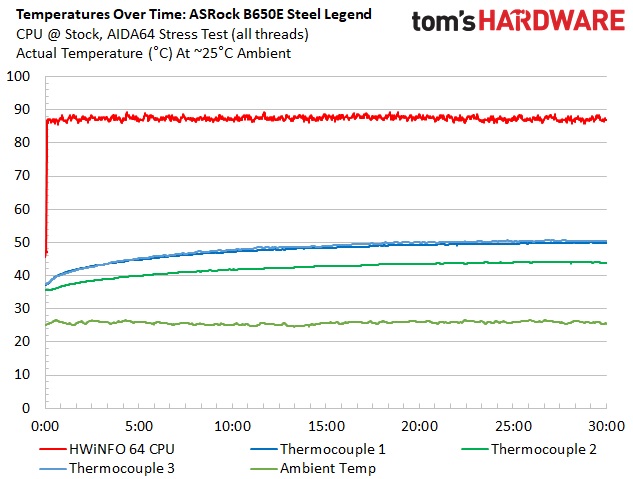
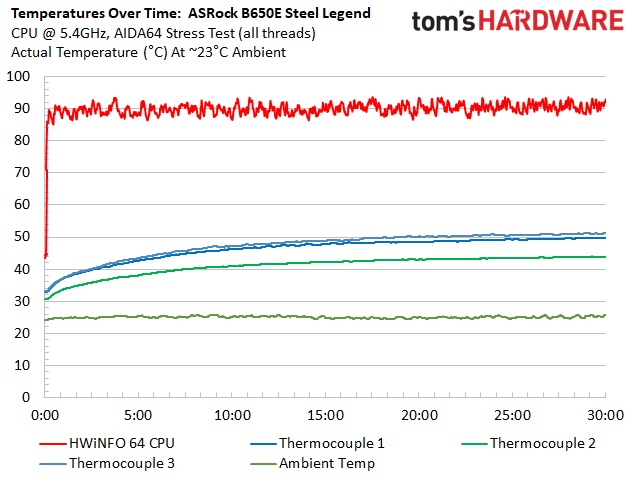

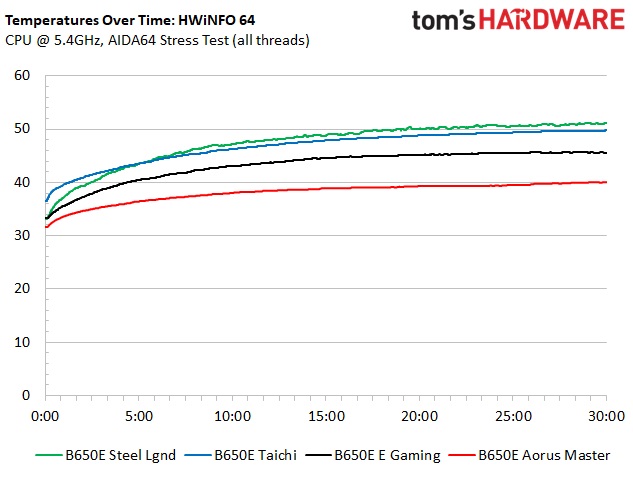
VRM temperatures on the B650E ran a bit warmer than others during stress testing, but are still well within the MOSEFTs limits. The system peaked at just over 50 degrees Celsius while using stock settings and 52 degrees Celcius when overclocked. The VRM cooling solution works well on the 60A SPS MOSFETs hidden below.
Bottom Line
ASRock’s B650E Steel Legend is a solid all-around motherboard. Priced at $269.99 (but often on sale for $249.99), it’s a mid-range offering with a distinct ‘steel’ appearance akin to the Prime boards from Asus or Gigabyte’s Aero line. It’s relatively well-appointed, offering a 20 Gbps Type-C port (via the front panel), three M.2 sockets (one PCIe 5.0 x4), 2.5 GbE, and integrated Wi-Fi 6E. Performance was average to above average in all tests except for the Procyon Office benchmarks, which were average to slightly below average. Performance in our game tests showed there are no worries there.
But the board does have some drawbacks. First, it only has two native SATA ports. If you have more than two SATA-based drives, as many of us do, you’ll have to get an add-in card for more ports. Also, the audio codec is dated, and discerning listeners may yearn for something better. I’d also like quick latches on the M.2 sockets to avoid dealing with tiny screws, though that’s a minor quibble.
As far as the competition goes, there are better options around this price. The MSI MAG B650 Tomahawk Wi-Fi costs $249.99. Gigabyte’s B650 Aorus Pro Ax and the Asus TUF Gaming B650 Plus Wi-Fi are $239.99. These boards offer superior audio solutions, and at least four SATA ports, which is better (and for the most part, cheaper) than the Steel Legend. Overall, we do like the Steel Legend, but with the competition priced $20-$30 lower at the time we wrote this article, it’s a tough sell at the current price.
MORE: Best Motherboards
MORE: How To Choose A Motherboard
MORE: All Motherboard Content

Joe Shields is a staff writer at Tom’s Hardware. He reviews motherboards and PC components.
-
CircuitJammer Honestly, SATA is on its way out. Two ports is probably sufficient for 99% of users. If you need more, buy something else.Reply -
helper800 Reply
I would personally not mind only 2-4 sata ports as long as I have 3+ m.2 slots.CircuitJammer said:Honestly, SATA is on its way out. Two ports is probably sufficient for 99% of users. If you need more, buy something else. -
PiranhaTech If it's that high of price and they want to reduce the ports, they should start integrating the likes of SAS ports into the boards. Each SAS port is easily expanded to 4 SATA devicesReply
I forgot what the other drive tech was. -
PlaneInTheSky Only 2 SATA ports, wtf.Reply
Still using USB 2.0 ports for both the back and board.
Only 1 USB-C port.
2.5Gbit/s instead of 10Gbit/s.
Ancient audio codecs.
And you want how much for this?!
No thanks. -
PlaneInTheSky ReplyHonestly, SATA is on its way out. Two ports is probably sufficient for 99% of users.
You are being ridiculous. Blu-Ray players and HDD still use SATA, and that isn't going to change any times soon.
Maybe you never back-up anything on your PC, but plenty of people do, and most people use HDD for that. HDD that use SATA.
Having only 2 SATA ports makes this board a no-go for anyone doing back-ups and using optical media.
And if you never do any serious work on your PC that requires a back-up, then why are you on TomsHardware or use a PC. Buy a console and chromebook instead. -
Gavin Greenwalt ReplyPlaneInTheSky said:You are being ridiculous. Blu-Ray players and HDD still use SATA, and that isn't going to change any times soon.
Ok... So one HDD on SATA and one Blu-ray drive on the other SATA done.
Most people backup to external drives these days anyway. Also optical drives are rare.
Also... Also... Optical for backup?? At 50GB per disk? Even a full spindle of 50 blurays is 2.5TB. You could get a small external 4TB HDD for $80 vs a 100 disc spindle of Blurays for $150.
The HDD is more compact and cheaper. You could (and should) but two USB drives and off-site one of them to a friend's house for the price of Blurays which also aren't rated for archival.
Or you could get like 2-3 years of cloud storage.
And for the handful of people living in the age of Limp Biskit and other 2000s nostalgia there are m.2 SAS cards with 8x SATA ports and you can go crazy without even using a single pcie slot. -
PlaneInTheSky ReplyYou could (and should) buy two USB drives and off-site one of them to a friend's house
Proper back-up is done with RAID.
Not some USB drive you attach on a sunday afternoon, while losing half your data from the week. -
adrian84481 I don't see anything wrong with the price or specs here. Seriously, it's a 4x DDR5 mobo, with PICe5.0 M.2 (and an additional 2x M.2 slots), decent VRM setup, decent connectivity (USB3.2 and WiFi 6E). Of course price is going to be high (AM5/DDR5, duh!). Complaining about "only" 2x SATA ports in 2023 is a bit of a stretch. 2x SATA is more than enough nowadays, you can still have one SATA SSD and one optical drive (because not all of us have coin to spend on large M.2 SSDs), or a "backup" HDD and an optical drive (yes, quotes around "backup", as a proper backup is stored off-machine, because, you know, crypto lockers and data corruption due to various reasons and physical theft and stuff).Reply
